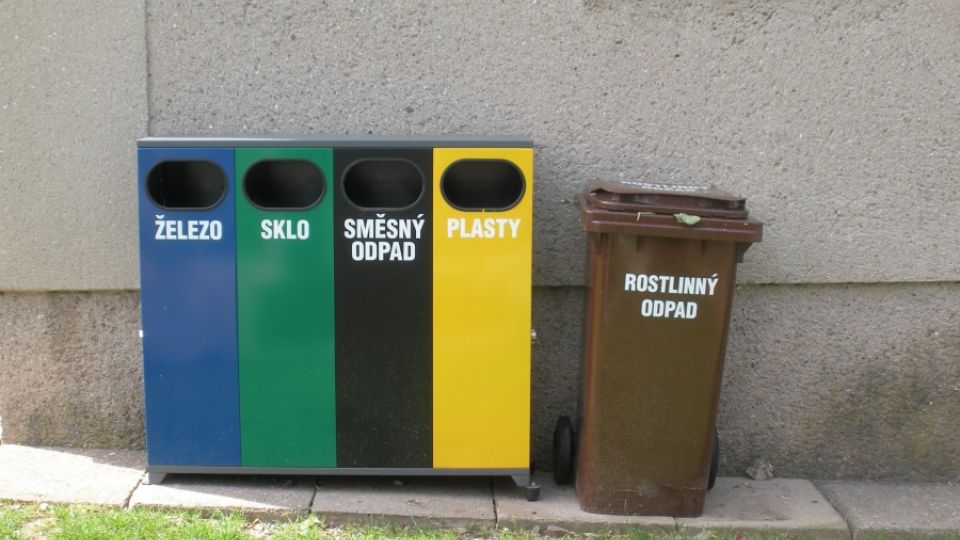The second year of the Waste Oscar competition has its winners. Which municipalities and towns produce the lowest annual amounts of waste per an inhabitant in the Czech Republic? (1) And which interesting and inspiring waste management examples were awarded by the expert commission? (2) Twice, Arnika will send the Oscar into the Plzeň Region. Among the municipalities having up to 1,000 inhabitants, the first place was won by Modrava, producing 39 kg of mixed waste per an inhabitant annually. In the group of towns having over 5,000 inhabitants, the town Kdyně won (similarly as in the last year), the only town below the level of 100 kg (namely, 98 kg). The overall best results in the Czech Republic were achieved by the winner in the group of bigger municipalities (having 1,001 do 5,000 inhabitants): Štítná nad Vláří - Popov in the Zlín Region, showing waste production of approximately 38.6 kilograms. In the second category, where the commission awards particularly inspiring good practice examples, the Waste Oscar will travel to four municipalities: Fulnek, Staré Hradiště, Dalešice, and Mokré. The overview of results and description of waste management of selected towns may be found at the web page: http://arnika.org/odpadovy-oskar-2016.
„We congratulate all the towns and municipalities that were in the top of the list, and that qualified into the competition. These results are based on many years of efforts. The municipality Štítná nad Vláří – Popov may serve as an example. For more than 20 years, it has led its inhabitants to take care for nice appearance of the municipality, clean air and the environment. Thanks to these efforts, they won Oscar in one of the categories now, and became even the absolute winner with the lowest waste production in the Czech Republic," said Arnika's expert on waste management systems, Ing. Milan Havel.
However, the municipalities and towns that won the awards in the second category of the competition deserve at least the same attention, too. This category does not consider solely the mixed waste production, but also the efficiency. Simultaneously, when selecting municipalities and towns to be awarded, Arnika focuses on ideas and solutions that may inspire further municipalities, their leaders, and inhabitants. In this category, the town Fulnek and the municipalities Staré Hradiště, Dalešice, and Mokré, succeeded this year. More information on waste management of the awarded town and municipalities may be found in the notes to the press release (3).
Representatives of the victorious towns and municipalities will obtain the awards on the Ministry of Environment Conference on Waste Prevention today.
„This year, similarly as in the last year, it is obvious that town and municipalities of any size may manage waste smartly and efficiently. Naturally, the challenges and problems faced by a small municipality and a bigger town are different, but, in the end, the most important thing is the willingness of the self-governments and inhabitants to manage waste in a sound and economical way. It is worthwhile both from the environmental and the economic points of view. The Waste Oscar may be a further reward and motivation, too," commented Havel this years' results.
The basic precondition for qualification into the both categories is waste production below 150 kg per an inhabitant. The organizers chose this limit because it is a value that is commonly attained in our neighbour states, however, the goal is still not common in the Czech Republic. In comparison with Austria and Germany, the average mixed waste production is by about a third higher in our country.
„All the towns and municipalities that qualified and/or won deserve congratulations. Not only because of the fact that they serve as an inspiration for other town and municipalities, but simply because good results should not be neglected. In particular, all the bigger towns that qualified and attained waste production below 150 kg per an inhabitant annually should be appreciated, because it is not a matter of course in the Czech Republic in any case," added Jan Vávra, Arnika press agent.
Notes:
1) In the first category, the towns and municipalities are divided into groups according to their size: municipalities up to 1,000 inhabitants, municipalities from 1,001 to 5,000 inhabitants, and towns over 5,001 inhabitants). In the case of small municipalities, the best results below 50 kilograms per an inhabitant may be expected, in the case of big towns, the best results are close to 100 kg. For all the towns and municipalities, a condition for qualification into the competition is an annual waste production below 150 kg per an inhabitant.
2) In the second category, the expert commission awards good practice examples. Arnika selects winners in the category at the nation-wide level only. In this category, not only mixed waste production is important, but also its efficiency. However, annual waste production below 150 kg per an inhabitant is a precondition for qualification into the competition here, too.
3) The Waste Oscars in category 2 were won by the town Fulnek and by the municipalities Staré Hradiště, Dalešice, and Mokré.
The overall waste management system is set very well in Staré Hradiště. The municipality may serve as an example how much paper, plastics and glass may be separated by households if properly motivated. In Staré Hradiště, this amount is about 80 kg per an inhabitant annually. It is approximately twice the nation-wide average. The overall result is even more noteworthy in view of the fact that this concerns really household waste only. For more information, please see: http://arnika.org/obec-stare-hradiste.
Fulnek is ranked among towns that develop their waste management conceptually in the long term. In 2014, it succeeded in reducing mixed municipal waste production per an inhabitant almost to 100 kg already. This is one of the lowest amounts of production of this waste kind in towns over 5,000 inhabitants. The town has achieved the result by the overall system adjustment, public education and through motivating inhabitants. Also because of these, it has achieved recycling level over 50 % in the long term. For more information, please see: http://arnika.org/mesto-fulnek.
Dalešice is a small municipality in the Liberec Region (181 inhabitants, 56 residential houses, 29 holiday houses), where the overall municipal waste production is about 100 kg per an inhabitant annually, and the residual mixed waste production below 50 kg. The municipality shows a high recycling level without burdening its budget by unnecessary costs. Waste from greenery maintenance is mulched, biodegradable waste is composted by households themselves. According to us, this represents a waste management model sustainable in the long term, suitable, in particular, for small municipalities. For more information, please see: http://arnika.org/obec-dalesice.
Mokré is found in the Hradec Králové Region, in the Rychnov nad Kněžnou District. It is a small municipality with approximately 150 inhabitants. Thanks to the overall adjustment of the system, the municipality shows a low mixed waste production (one of the lowest in the whole Region) and it has achieved a very good recycling level, too. We appreciate also completeness and lucidity of information published in the municipality newsletters. For more information, please see: http://arnika.org/obec-mokre
However, all the proposed candidates have to be appreciated. For example, results of the town Kyjov illustrate the potential for reduction of mixed waste production through implementation of a town-wide separated collection of biodegradable waste. See: http://arnika.org/mesto-kyjov. The example of Nenkovice shows how the amounts of separated plastics may be increased by placing the separated waste containers directly by the residential houses. See: http://arnika.org/obec-nenkovice.
The competition is carried out within the framework of the project "Waste Management of Municipalities - Good Practice Examples", supported by the Ministry of Environment. The published information need not express the opinion of the grantor.







